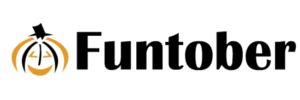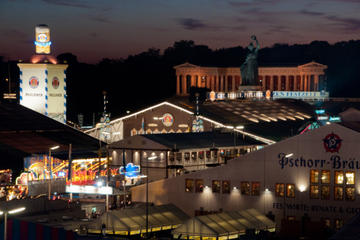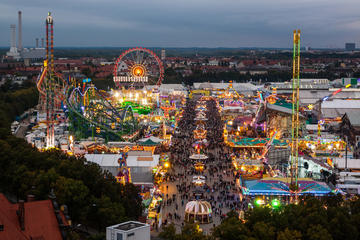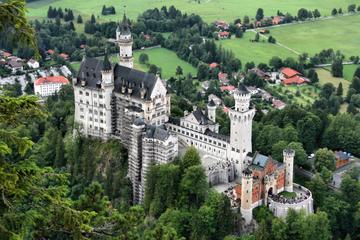History of Oktoberfest
Here’s our guide to the history of Oktoberfest where you can learn about King Ludwig of Bavaria and the start in 1810 of the Oktoberfest celebration we love today. In 1810, Crown Prince Ludwig of Bavaria, who would later become King Ludwig I, organized festivities and a horse race to celebrate his marriage to Princess Therese of Saxony-Hildburghausen. It was held in a field outside the city gates of Munich five days after the October 12th wedding. 40,000 Bavarians attended the celebration. The horse race so popular that the royal family decided to hold it again the next year. And that was the start to Oktoberfest.
In 1819, responsibility for the festivities was passed from the royal family to the city of Munich. The meadow where Oktoberfest is held is now known as Theresienwise, or Wiesn among locals, after Princess Therese. The horse races were stopped in 1960, but the agricultural show first held in 1811, Bayerisches Zentral-Landwirtschaftsfest, is still held every three years.
The first carousel was added to the festivities in 1818. Mechanical rides were featured at the Oktoberfest in the 1870s and Germany’s first roller coaster was introduced to the festival in 1908.
In 1835, on the 25th anniversary, Oktoberfest was extended to include a week of festivities. Originally held on October 17th, the celebrants decided at the end of the 19th century to move Oktoberfest a bit earlier in order to take advantage of more favorable weather in September. It now starts the third weekend in September (or 16 days prior to the first Sunday in October) and concludes on the first Sunday of October, unless the first Sunday is October 1st or 2nd, in which case the festival is extended until October 3rd.
The 1850s brought two important artistic works near Theresienwise. The Bavaria Statue, a female personification of the Bavarian homeland in cast bronze, was dedicated in 1850. The court architect of King Ludwig I, Leo von Klenze, proposed the first design of the Bavaria statue in 1824. Klenze was also selected to construct the Ruhmeshalle (Hall of Fame), which was dedicated in 1853, which is also located above Theresienwiese. The Hall of Fame was built to holds busts celebrating important Bavarians. But due to destruction of the busts during World War II, many older busts have been replaced by plaques.
In 1881, the city council authorized the first bratwurst stand. The small stands and booths that were common for selling items at Oktoberfest were replaced by the beer tents in 1896. The largest beer tent ever was opened in 1913. The Braurosl could hold 12,000 guests. The Braurosl tent is smaller now: it holds about 6,000 guests. The largest tent today is the Hofbrau-Festzelt tent which seats 10,000.
The tradition of the opening procession began in 1887. Each year, the road to the Wiesn is closed and thousands of spectators watch the innkeepers, horse drawn carriages, and musicians parade to their tents immediately before the opening of Oktoberfest. The opening ceremony began in 1950. Munich’s Lord Mayor gets the festivities started by tapping the first keg and crying “O’zapft is!” after a twelve gun salute.
Oktoberfest was the victim of a deadly terrorist attack in 1980. On September 26th, the bomb killed 13 people and injured over 200 in one of the deadliest attacks on German soil since World War II. A small memorial was placed on the site in 2008.
Oktoberfest has been cancelled 24 times throughout history. War, economic weakness following the wars, and cholera epidemics were the cause. It was first cancelled in 1813 (also seen this date listed as 1812) and last cancelled in 1948, when the weak economic recovery following World War II caused them to hold an autumn festival instead.
Recent Updates
In 2014, the famous Hippodrom tent closed. The owner was convicted of tax evasion. It was replaced by the Marstall tent. The Marstall family had been running the smaller Kalbs Kuchl tent for years.
In 2015, the beer tents officially crossed the ten euro mark. No beer tent in 2015 sold a liter of beer for less than 10 euros.
In 2016, Munich increased security measures because of terrorism concerns. It imposed a backpack ban and installed a mobile fence.
Enjoy Oktoberfest in Munich
7 Day Munich Oktoberfest Package
$5,376.35
Oktoberfest Tour and Beer Tent
$136.59
Castle Day Tour From Munich
$59.01
Additional Information:
Bavarian Purity Law
Munich History
Oktoberfest Facts
Oktoberfest Home
Last Major Update:





I love October fest! It’s the best time of the year. Cool weather and fall leaves turning into beautiful colors.